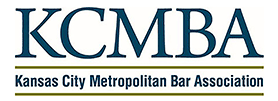Black ice is a notorious and treacherous road hazard that can catch even the most experienced drivers off guard. Accidents caused by black ice can lead to significant damage, injuries, and even fatalities. When such accidents occur, it’s crucial to determine who is at fault and responsible for the consequences. In this article, we will discuss the various factors involved in assessing liability in accidents caused by black ice.
Understanding Black Ice
Before we explore the question of fault, let’s first understand what black ice is. Black ice is a nearly transparent layer of ice that forms on road surfaces. It’s called “black” because it takes on the color of the underlying pavement, making it difficult to spot, especially at night or in low light conditions.
The Role of Weather Conditions
Many people attribute accidents caused by black ice to acts of nature and believe that no one can be held responsible for them. Insurance agents and others often argue that these accidents are “acts of God” and, therefore, no one should be deemed at fault.
Nature’s Involvement
Indeed, it’s true that black ice is a result of natural weather conditions, but that doesn’t absolve all responsibility. Mother nature may create black ice, but individuals must adapt their behavior accordingly when driving in such conditions.
Negligence and Liability
While it’s tempting to blame black ice entirely, we need to examine the actions of the individuals involved in the accident. Were they driving responsibly and taking necessary precautions?
Case in Point
Take, for instance, the case of a jeep sliding on black ice. Is the driver culpable in such a scenario? According to experts, the answer is often yes.
Speeding and Acceleration
In the video evidence, we can observe that the driver of the jeep was accelerating and driving at a speed clearly inappropriate for the prevailing road conditions. These actions are indicative of negligence and recklessness.
Responsibility for Driving Conditions
Drivers have a responsibility to adapt their speed and driving behavior to the conditions of the road. When black ice is present, this means reducing speed significantly, avoiding sudden maneuvers, and increasing following distance.
Determining Fault
The determination of fault in accidents caused by black ice can be a complex process. It requires a careful examination of the circumstances, witness accounts, and often the assistance of experts.
Comparative Negligence
In many cases, fault may not solely lie with one party. Comparative negligence comes into play, where both the driver and the condition of the road are evaluated. If it’s found that the driver’s actions significantly contributed to the accident, they may be held partially responsible.
Legal Implications
Accidents caused by black ice can have legal consequences, including insurance claims and potential lawsuits. Insurance companies will investigate the circumstances of the accident to determine liability.
Conclusion
Accidents caused by black ice are not solely the result of natural occurrences. Drivers have a responsibility to adapt to adverse road conditions, including reducing speed and avoiding reckless behavior. While black ice itself is a hazard, negligence on the part of a driver can contribute to accidents.
If you find yourself in such a situation, it’s essential to seek legal advice and contact us for assistance in navigating the complexities of determining fault and pursuing a claim.






















